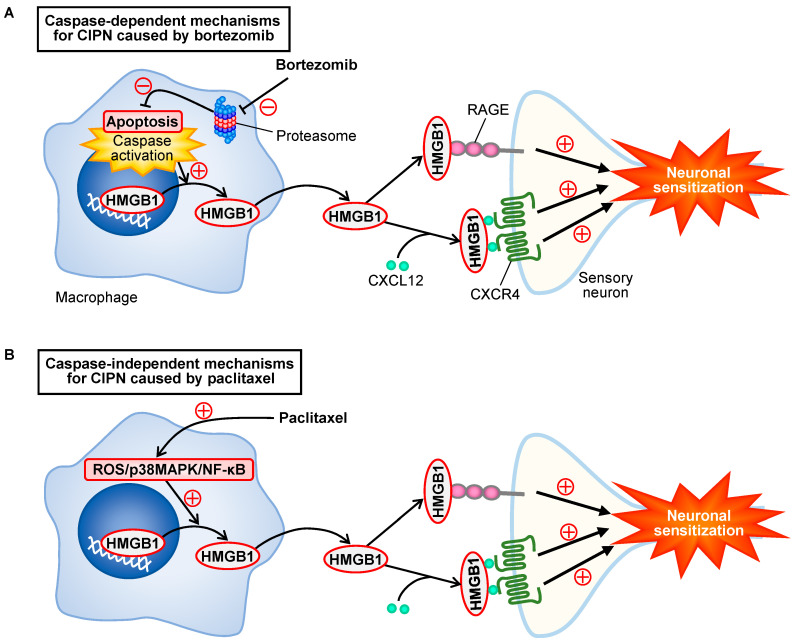Figure 9.
Scheme for bortezomib-induced caspase-dependent HMGB1 release from macrophages and CIPN development, in contrast to caspase-independent mechanisms for paclitaxel. (A) Inhibition of proteasome by bortezomib causes caspase-dependent apoptosis of macrophages followed by the release of HMGB1, which in turn causes neuronal sensitization via activation of RAGE and acceleration of CXCL12/CXCR4 signals, leading to CIPN. (B) Paclitaxel causes HMGB1 release from macrophages through activation of the ROS/p38MAPK/NF-κB pathway [5], independently of caspase (see Figure 7D), and the extracellular HMGB1 develops CIPN in a manner dependent on RAGE and CXCR4 [5], as shown in the CIPN caused by bortezomib.

